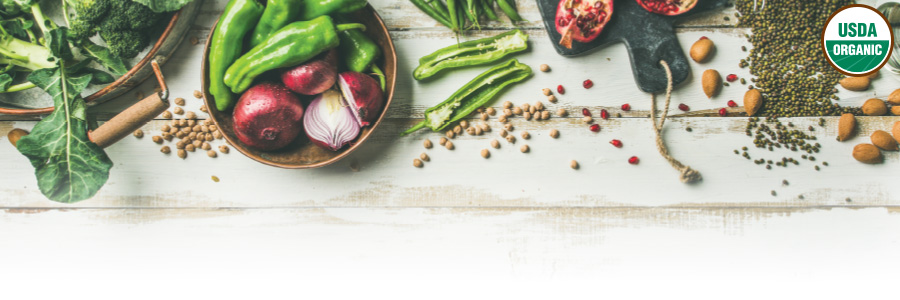


Sign-up for {N}power to get exclusive discounts, newsletters, members-only features, and more!
 Denver - Design District - Alameda and Broadway
Denver - Design District - Alameda and Broadway
368 S Broadway
Denver, CO 80209
United States
 Preferred Store:
Select a Store
Preferred Store:
Select a Store

For many people a gluten-free diet was born out of medical necessity; those who have celiac or non-celiac gluten sensitivity must avoid gluten or suffer some pretty hefty health consequences, including severe damage to the gut. But these days, a lot of people are choosing a gluten-free lifestyle not out of necessity, but because they think it is a healthier way to eat. In fact, the majority of people who chose to go gluten free do so because they consider it to be a healthier, more natural way of eating. Their reasons for avoiding gluten range from reducing inflammation to losing weight. 1

If you follow a gluten-free diet in a healthy way, it is an excellent way to reduce inflammation and lose weight, if that is your goal; however, “gluten free” doesn’t always equal healthy. Take this headline from one “medical” website: “Eating a gluten-free diet does not mean a person has to give up fast food,” which is followed by a comprehensive list of fast food chains and their gluten-free options. And a recent survey of American and Canadian consumers found that the top gluten-free products they were buying included crackers, pasta, bread, cereal, cookies, and pizza. 2 Who doesn’t love a good pizza, but just because something is gluten free doesn’t mean that it’s a health food, nor is it a free pass to eat as much of it as you want. So how do you do gluten free to really optimize your health? Read on to find out.
A healthy gluten-free diet is really not hard to follow; in fact, it falls in line with any other healthy dietary lifestyle. It is one that is centered around an abundance of vegetables and a little fruit, naturally-raised meats, pasture-raised eggs and dairy (if you can tolerate it), and healthy fats such as those found in coconut oil, olive oil, avocados, and nuts and seeds. These are all nutrient-dense foods that are naturally gluten free. They are foods that will provide the nutrients that are required for good health and will support healing of the gut for those with celiac and gluten sensitivity. They are the foods that will optimize physical and mental health. And while it’s perfectly okay to indulge in a gluten-free pizza or pasta once in a while, reserve those foods as treats rather than relying on them as staples—don’t make these foods the foundation of your diet, gluten free or not.
According to a survey of more than 1,000 people conducted by the Consumer Reports National Research Center, 63 percent of respondents thought that following a gluten-free diet would improve physical or mental health.3 But if you are simply substituting the gluten-containing versions of pasta, bread, cookies, and pizza with gluten free and viewing “gluten-free” as a free pass to eat as many of these foods as you’d like, you are not going to reap the health benefits of a natural foods gluten-free diet. These processed foods are not necessarily healthier than their gluten-filled counterparts and are best reserved as treats or special occasion foods. Many of them are carb-heavy foods that can spike blood sugar and lead to weight gain if you overindulge (gluten-free products made with almond or coconut flour are good low-carb options). Additionally, if you are avoiding gluten because of celiac disease or gluten sensitivity, these foods do not promote healing in the gut, a critical component of recovery. Many processed gluten-free foods rely heavily on corn and soy, other common allergens that can continue to damage the intestinal lining in someone that is already battling celiac or gluten sensitivity. The majority of corn and soy grown in this country is also genetically modified, which can worsen intestinal damage; see the sidebar “Are GMOs Hiding in Your Gluten-Free Foods?” for more information.
Whether you follow a gluten-free diet out of medical necessity or because you want to adopt a healthier way of eating, building your diet around fresh, whole foods that are naturally gluten free rather than processed foods—gluten free or not—is a healthier, more natural way of eating that will go far in supporting mental and physical health. Processed gluten-free foods rely heavily on corn and soy as replacements for wheat and other gluten-containing grains— the majority of corn and soy produced in the United States is genetically modified (GM), and GM foods may alter the health of the human intestines, exacerbating celiac disease and gluten sensitivity. Corn and soy modified to resist the herbicide glyphosate (Roundup) are heavily sprayed with the chemical and carry higher residue levels. Glyphosate has been shown to disrupt intestinal bacteria, killing beneficial bacteria while allowing pathogenic ones to thrive. It may also decrease the intestinal lining’s ability to produce digestive enzymes and can activate an immune response, leading to inflammation.4 5 Of equal concern is the corn that has been modified to produce its own pesticide, Bacillus thuringiensis (Bt), which also appears to damage the intestinal lining and increase inflammation in the gut.6 7 Not good news, especially for those trying to heal their guts. People switch to gluten-free products with good intentions, but the GMOs hiding in many of these foods may inadvertently be making matters worse. Avoid GMOs by buying products with the USDA organic seal, that state on the label they are GMO-free, or have been verified by the Non-GMO Project. –Heather Pratt



Sign-up for {N}power to get exclusive discounts, newsletters, members-only features, and more!
